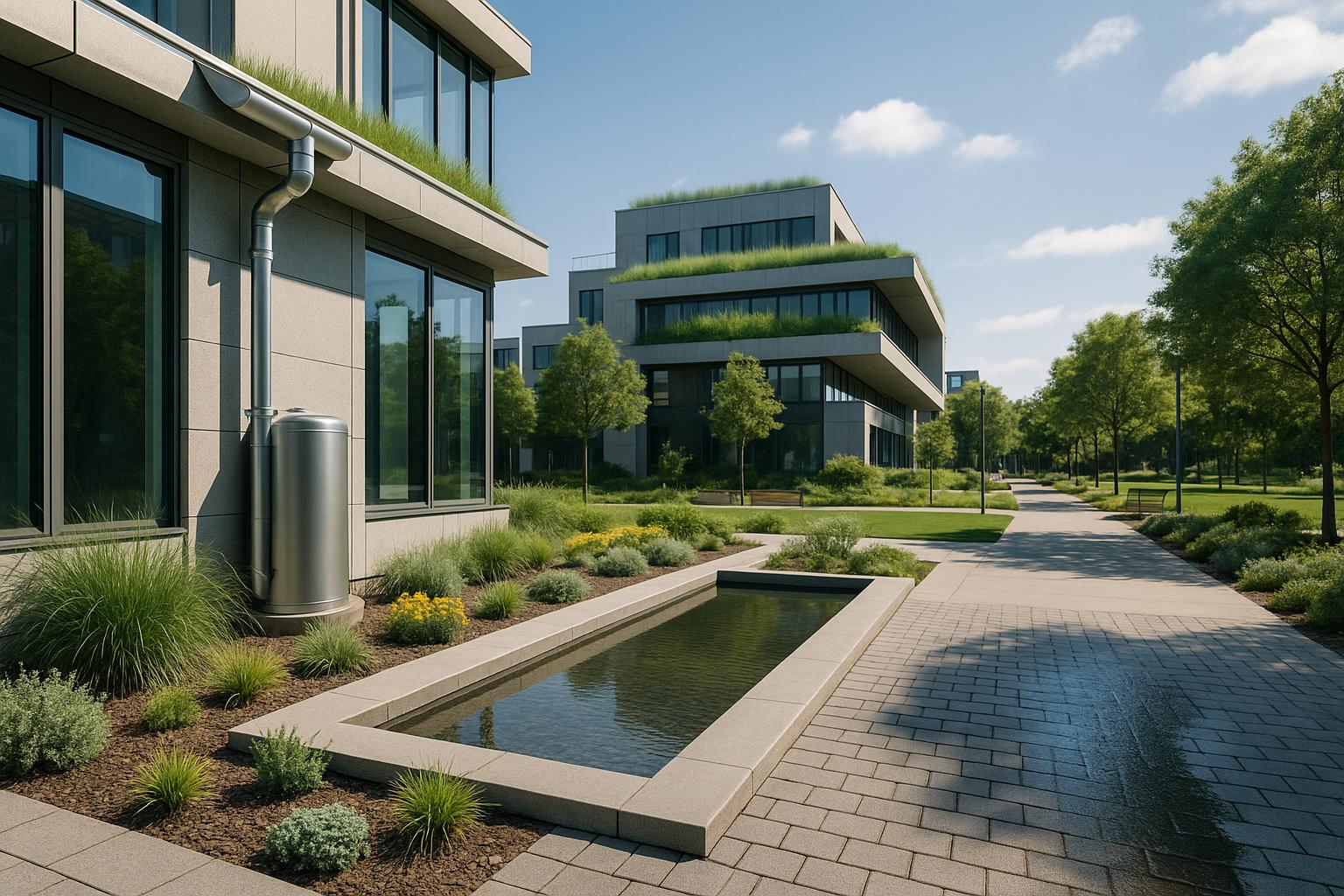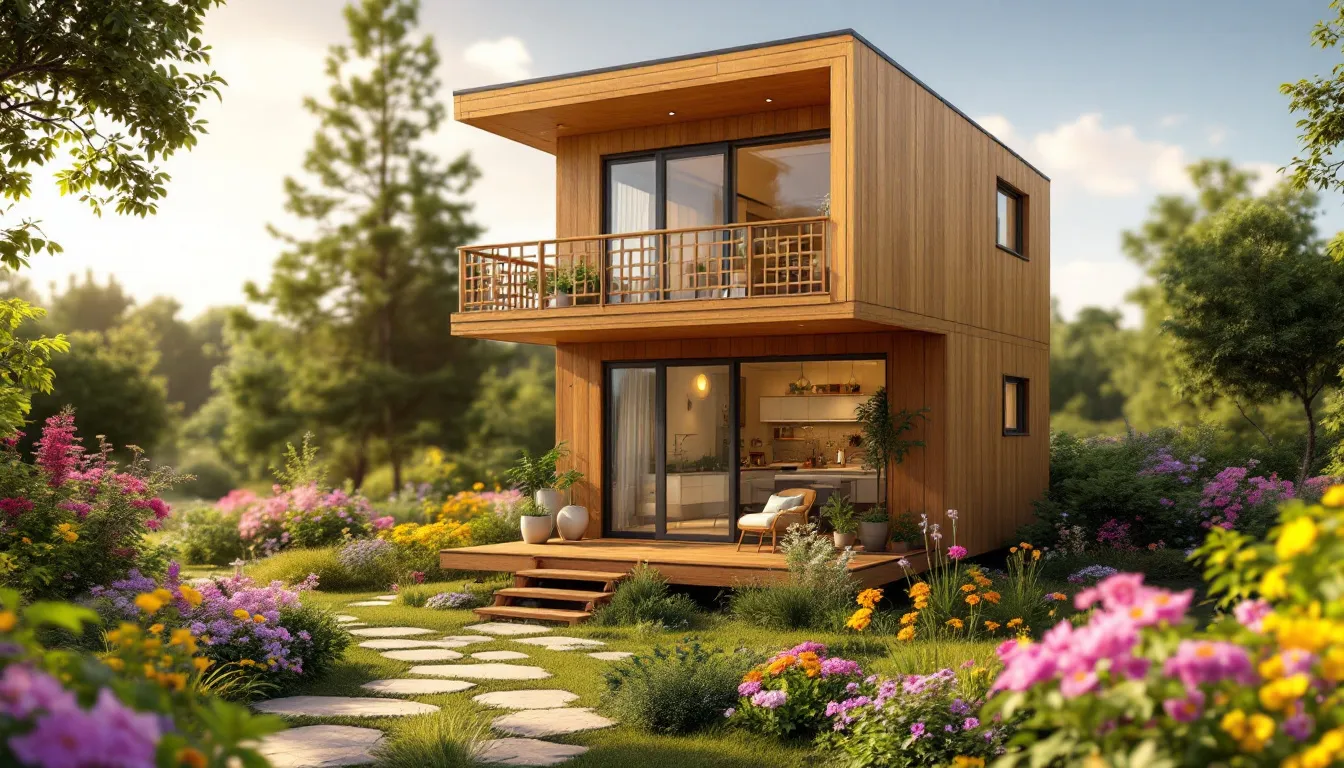Public space lighting is essential for safety, accessibility, and creating welcoming environments. Here's why it’s important:
- Safety: Reduces crime by up to 20% and improves visibility for pedestrians.
- Energy Efficiency: Modern LEDs save 70-90% energy, with smart systems adding another 20-35% savings.
- Accessibility: Enhances navigation, especially for visually impaired individuals.
- Community Impact: Encourages social interaction and revitalizes spaces.
Key Takeaways:
- Use LEDs for energy savings and durability.
- Opt for smart lighting systems to adjust brightness based on conditions.
- Focus on warm light colors (2700K-3000K) for comfort and ecological balance.
- Prioritize strategic placement to avoid light spill and dark spots.
- Involve the community to ensure lighting meets local needs.
Well-planned lighting transforms public spaces into safer, more efficient, and enjoyable areas for everyone.
Light for Public Space: Activating Urban Environments Through Modern Lighting Design
Principles for Effective Public Space Lighting
Creating effective lighting for public spaces involves focusing on safety, energy efficiency, and an inviting atmosphere, all while being mindful of ecological concerns.
Targeted Lighting Placement
Placing lights strategically ensures illumination is focused where it's needed most, avoiding unnecessary spillover into unwanted areas. This method uses shielding and precise aiming to control light flow effectively.
| Aspect | Benefit | Implementation |
|---|---|---|
| Shielding | Reduces light spilling into non-essential areas | Use directional fixtures and covers |
| Light Distribution | Eliminates dark spots and ensures even lighting | Adjust mounting angles and placement |
Balancing Light Levels
Smart lighting systems are a game-changer for public spaces. They automatically adapt brightness based on current conditions, further cutting energy use by 20-35% on top of the 70-90% savings achieved with LEDs.
These systems adjust based on:
- Current ambient light
- Usage patterns
- Environmental conditions
Using Warm Light Colors
Warm lighting enhances comfort and supports ecological balance. Opt for light temperatures between 2700K and 3000K for a welcoming feel, especially in residential areas.
Key factors to consider:
- Color Temperature: Stick to warmer tones for better comfort and visibility.
- Light Quality: Use lighting with good color rendering for safety and clarity.
- Ecological Sensitivity: Limit blue-violet wavelengths to protect human health and local wildlife.
Design Tips for Public Space Lighting
Lighting Based on Activities
Different areas in public spaces need specific lighting approaches to suit their purpose. For example, parks often use softer lighting to maintain a natural ambiance, while pathways require brighter lights to ensure safety, as recommended by IESNA.
| Activity Zone | Lighting Approach |
|---|---|
| Walking Paths | Medium-bright, continuous illumination |
| Recreation Areas | Adjustable lighting based on activity needs |
| Rest Areas | Warm, subtle ambient lighting |
To achieve this, designers can use advanced tools to plan and analyze lighting needs with precision.
Using Photometric Tools
Photometric analysis tools are key to avoiding dark spots and ensuring even lighting across public spaces. These tools allow designers to map light intensity, coverage, and glare, ensuring spaces are both safe and visually appealing. By simulating how light will spread, they help identify potential safety concerns before installation begins.
Blending Lighting with Architecture
Lighting should work in harmony with the surrounding architecture while meeting functional requirements. Tools like Architecture Helper can analyze architectural styles and suggest lighting solutions that fit seamlessly. For instance, Villapinzón's LED upgrades improved safety while aligning with local architectural aesthetics.
Key factors to consider for integrating lighting with architecture include:
- Color Temperature: Match the lighting's warmth or coolness to nearby materials (e.g., warm tones for brick, cooler tones for metal).
- Fixture Style: Choose designs that complement the area's architectural features.
- Mounting Height: Ensure fixtures align with the building's scale and the proportions of the surrounding streets.
Smart lighting systems, when paired with LED technology, can reduce energy consumption by up to 50%. Adding adaptive controls can deliver an extra 20-35% in energy savings.
Choosing the Right Lighting Technology
When it comes to effective lighting, selecting the right technology plays a key role in ensuring efficiency, durability, and a better experience for users.
Energy-Saving Lighting Options
LED lighting has become the go-to choice for public spaces, thanks to its efficiency and long-lasting performance. For example, New York City's switch to LED lighting has saved over $14 million annually in energy costs.
Here’s why LEDs stand out:
- Long lifespan: They can last between 50,000 and 100,000 hours.
- Precision: Excellent directional light control reduces waste.
- Better color rendering: Colors appear more natural and vibrant.
- Low maintenance: LEDs require less upkeep compared to traditional options.
Weather-Resistant Fixtures
Outdoor lighting needs to withstand tough conditions. Weather-resistant fixtures ensure consistent performance and lower maintenance costs by using materials that resist corrosion and UV damage.
What to look for:
- IP65+ rating: Protects against dust and water.
- Durable materials: Marine-grade aluminum or stainless steel are ideal.
- Built-in protection: Fixtures should handle extreme weather and UV exposure.
Smart Lighting Systems
Smart lighting takes traditional setups to the next level by integrating advanced technology. A great example is the Villapinzón project, where 657 luminaires were replaced with smart LEDs, boosting energy efficiency and improving public safety.
These systems offer:
| Feature | Benefit |
|---|---|
| Adaptive controls | Adjust brightness automatically and monitor maintenance needs remotely |
| Data tracking | Collect insights on traffic and environmental conditions |
| Security integration | Enhance surveillance and emergency response capabilities |
With the right lighting technology, the focus shifts to planning and implementing these solutions to seamlessly integrate them into public spaces.
sbb-itb-1be9014
Steps for Installing Public Space Lighting
Planning and Zoning for Lighting
Good lighting begins with understanding the area's specific needs and adhering to local regulations. A thorough site analysis helps pinpoint different requirements for areas like busy streets, green spaces, or recreational zones. Tools like smart systems can simplify this process by offering real-time insights into how spaces are used.
Involving the Community
Once you’ve mapped out the zones, it’s vital to bring the community into the conversation. By gathering input through consultations, surveys, and feedback sessions, you can ensure the lighting plan reflects local priorities and serves the people it’s meant for.
"By upgrading to LED bulbs and adding Internet of Things (IoT) connectivity to public lighting systems, cities can cut energy usage by up to half while meeting community needs." - Sierra Wireless
Maintaining Lighting Systems
Keeping public lighting systems in top shape requires a solid maintenance plan. Smart systems make this easier by enabling remote monitoring and proactive care, which boosts reliability and reduces downtime.
For example, the Villapinzón project modernized its lighting infrastructure, cutting down on maintenance needs significantly. Regular tasks like cleaning lenses, checking performance, and replacing worn components are essential for keeping systems running smoothly. Advanced systems, such as those offered by Enel X, can even adjust brightness automatically based on conditions, further reducing upkeep costs while enhancing reliability.
Examples of Successful Public Space Lighting
Lighting in Urban Parks
Public spaces worldwide are being transformed through well-thought-out lighting designs. While earlier sections covered the technical side of LED upgrades, real-world examples highlight how these advancements improve community spaces. Take the Villapinzón project, for instance - it demonstrates how modern lighting can make parks more welcoming and safer, all while conserving energy through smart systems.
The key to successful urban park lighting lies in balancing appearance and practicality. Projects that combine thoughtful design with the needs of the community tend to create spaces that stay lively and accessible well into the evening.
Community-Driven Lighting Projects
Community-led lighting efforts show how public involvement can amplify the impact of these projects, addressing broader urban issues. By tailoring technical solutions to meet local preferences, these initiatives achieve meaningful results.
Enel X emphasizes the role of smart city lighting in modern urban planning:
"Today, most public lighting is still reliant on outdated technology based on traditional light sources. One of the main goals of a smart city is to save energy by replacing the current public lighting infrastructure with innovative LED solutions and cutting-edge technologies that save money, make public spaces safer, and improve quality of life for residents."
Modern systems often include sensors that collect real-time data on traffic, noise, and air quality. This allows cities to adjust lighting patterns dynamically, ensuring both efficiency and responsiveness to local needs. Cities using IoT-connected lighting systems have seen energy consumption drop by as much as 50%.
These community-focused projects highlight how blending advanced technology with public input can transform urban spaces. Thoughtful lighting not only boosts safety and efficiency but also makes public areas more enjoyable and functional for everyone.
Conclusion: Key Takeaways for Public Space Lighting
This section highlights important lessons for creating effective public lighting solutions, drawing from real-world examples. Modern approaches to public space lighting combine thoughtful design principles, such as the Five Principles for Responsible Outdoor Lighting, with advanced technology. This not only cuts energy costs but also improves safety and supports ecological goals.
Smart lighting systems, which merge LED technology with adaptive controls, play a big role in improving efficiency. These systems allow communities to fine-tune their lighting setups to meet practical needs while aligning with environmental priorities.
Here are some key strategies for successful public lighting:
| Aspect | Benefit |
|---|---|
| Strategic Design | Improves visibility and reduces waste |
| Smart Integration | Adapts to real-time conditions effectively |
| Environmental Impact | Lowers energy use and minimizes light pollution |
| Community Focus | Enhances safety and accessibility |
The future of public lighting lies in combining advanced technologies with ecological awareness. The goal isn't to make spaces overly bright but to provide the right level of illumination exactly where and when it's needed. This thoughtful approach ensures public areas remain safe, welcoming, and environmentally conscious for everyone.
FAQs
Why is lighting important in public spaces?
Lighting in public spaces plays a key role in making these areas safer and more functional. It helps prevent accidents, discourages crime, and ensures people feel secure, especially in busy locations. Proper lighting also highlights landmarks like fountains or sculptures, making navigation easier. Plus, it allows public spaces to be used after dark for activities and gatherings.
Here are some main benefits of public lighting:
- Improved safety and reduced crime
- Better navigation and wayfinding
- Support for nighttime activities
- Encourages community interaction
Switching to LED lighting with smart controls can cut energy use by up to 90%. On top of that, adaptive systems can add another 20-35% in savings. This shows how modern solutions can meet safety needs while being mindful of energy use.
For lighting to be effective, it’s essential to follow proven design principles and use the latest technology. By carefully balancing functionality with environmental concerns, communities can create spaces that are safe, accessible, and eco-friendly, all while keeping light pollution in check [3].
As discussed in this guide, well-thought-out lighting design not only boosts safety and energy efficiency but also fosters stronger community connections and supports sustainability goals.


